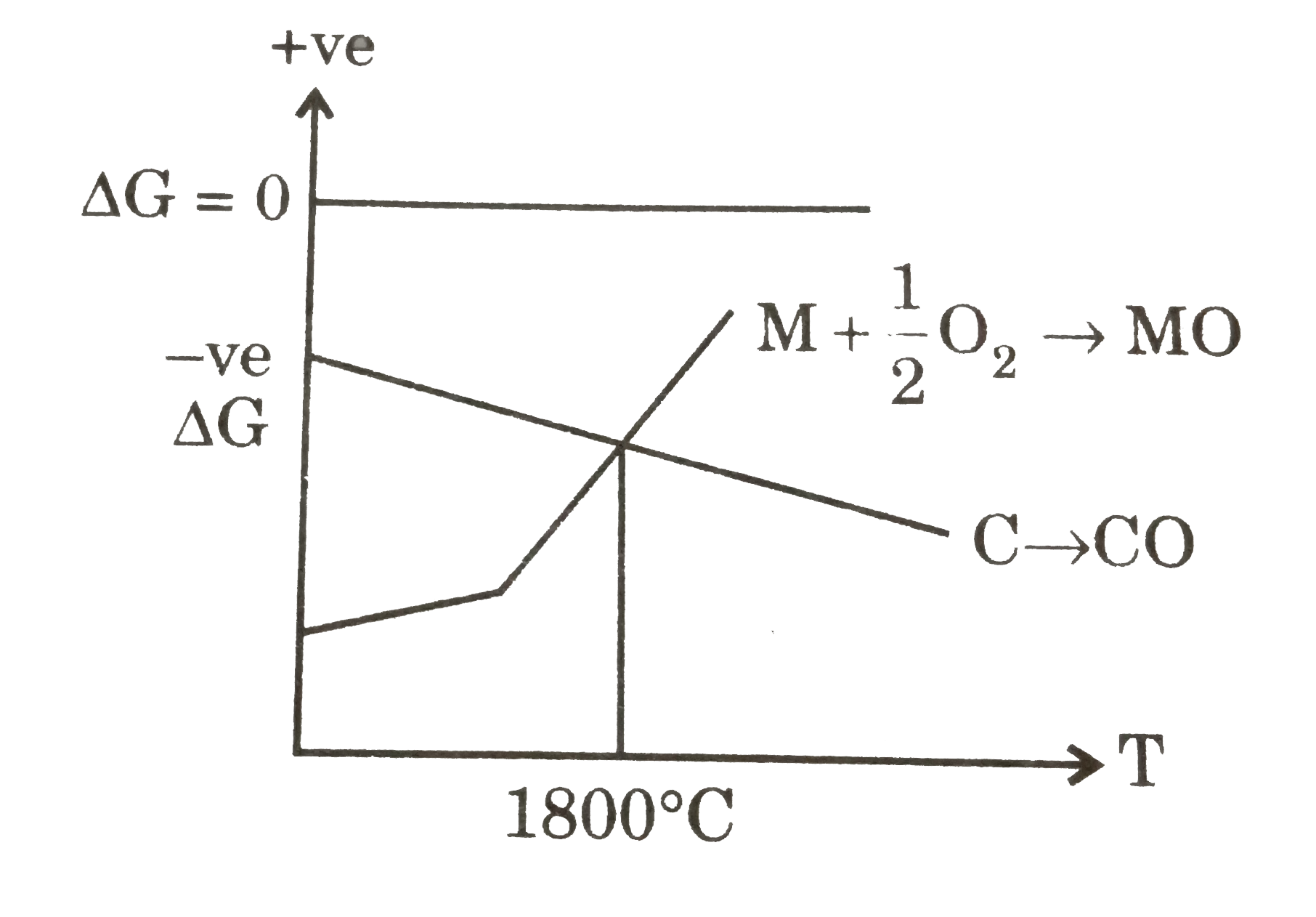The gibbs free energy of formation of MO and CO at temperature 1000∘C and 1900∘C are given below :
This reactioin is feasible at temperature:
2M+O2→2MOΔG1000∘C=−921kJ/molΔG1900∘C=−300kJ/mol2C+O2→2COΔG1000∘C=−432kJ/molΔG1900∘C=−624kJ/mol
MO+CΔ−−→M+CO↑⏐⏐
1900∘C
1000∘C
900∘C
12000∘C
The correct Answer is:A
Step by step video, text & image solution for The gibbs free energy of formation of MO and CO at temperature 1000^(@)C and 1900^(@)C are given below : This reactioin is feasible at temperature: {:(2M+O_(2) to2MO,DeltaG_(1000^(@)C)=-921 kJ//mol),(,DeltaG_(1900^(@)C) = -300 kJ//"mol"),(2C+O_(2) to2CO,DeltaG_(1000^(@)C)=-432 kJ//mol),(,DeltaG_(1900^(@)C) = -624"kJ"//"mol"):} MO + C overset(Delta)(to) M + COuparrow by Chemistry experts to help you in doubts & scoring excellent marks in Class 11 exams.
Updated on:21/07/2023Topper's Solved these Questions
Similar Questions
Knowledge Check
The standard free energy of formation of MgO AND CO at temperature 1000∘Cand2000∘C are given below (they refer to the reaction involving one mole of oxygen at one atomsphere pressure) The free energy change to the reaction.
2Mg+O2→2MgO ΔG1000∘C=−941kJ/mol
ΔG2000∘C=−341kJ/mol
2C+O2→2CO ΔG1000∘C=−439kJ/mol
ΔG2000∘C=−628kJ/molAAt 1000∘C temperatureBAt 2000∘C temperatureCBoth a and bDNone of theseFor the following cell reaction,
Ag∣∣Ag+∣∣AgCl∣∣Cl−∣∣Cl2,Pt
ΔG0f(AgCl)=−109kJ/mol
ΔG0f(Cl)=−129kJ/mol
ΔG0f(Ag+)=78kJ/mol
E∘ of the cell isA−0.60VB0.60VC6.0VDNoneConsider the following reactions at 1000∘C.
(A) Zn(s)+12O2(g)→ZnO(s),ΔG∘=−360 kJ/mol
(B) C(gra)+12O2(g)→CO(g),ΔG∘=−460 kJ/mol
correct statement at 1000∘C isAZn can be oxidised by COBZnO can be reduced by "C"CCO can be reduced by ''Zn''DBoth (a), (2) true
For the following cell reaction,
Ag∣∣Ag+∣∣AgCl∣∣ClΘ∣∣Cl2,Pt
ΔGof(AgCl)=−109kJ/mol
ΔGof(ClΘ)=−129kJ/mol
ΔGof(Ag+)=78kJ/mol
Eo of the ell is:-
View SolutionIn the following chemical reaction:
MO+CΔ−−→M+CO↑⏐⏐

ΔG overall of the reaction is zero at what temperature
View SolutionConsider the following reaction at 1000∘C
(A)Zn(s)+12O2(s)+ZnOs,ΔG0=−360kJmole−1
(B) (B)Cn(s)+12O2(g)→COs,ΔG0=−460kJmole−1
choose the correct statement at 10000C
View SolutionConsider the following reaction at 1000∘C
(A) Zn(s)+12O2(g)→ZnO(s),ΔGӨ=−360kJmol−1
(B) C(s)+12O2(g)→OO(g),ΔGӨ=−460kJmol−1
Choose the correct statement at 1000∘C
View SolutionThe minimum voltage required to electrolyse alumina in the Hall-Herout process is
[Given, ΔG∘(f)(Al2O3)=−1520kJ/mol and ΔG∘(f)(CO2)=394kJ/mol]
View Solution
